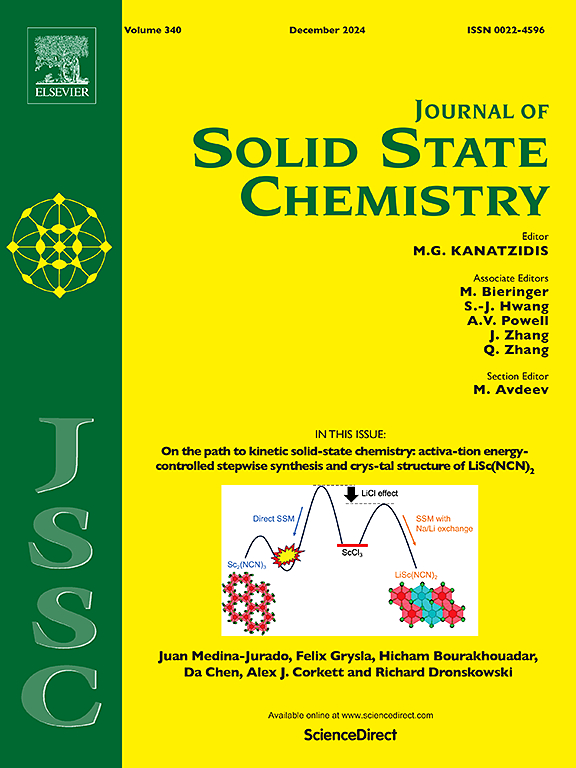A Cd(II)-based Metal-Organic Frameworks (MOFs) with new topological net as multi-functional chemical sensor in detecting Fe3+, CrO42− and Cr2O72-
IF 3.2
3区 化学
Q2 CHEMISTRY, INORGANIC & NUCLEAR
引用次数: 0
Abstract
In this study, a new MOFs {[Cd3(HL)6]}n (1) was synthesized by using the 6-(pyridin-3′-yl) isophthalic acid (H2L) and Cd(II) ions act as the building block via the solvothermal synthesis procedure, which have been fully characterized by single crystal X-ray diffraction, TGA, FT-IR, UV–visible spectroscopy and fluorescence experiments. The structure analysis reveal that 1 show a 2D layer structure based on a trinuclear [Cd3(COO)6N6] secondary build blocks (SBUs). Interestingly, the half depronated organic ligand HL− adopt three coordinated models with the center Cd(II) ions. Topological analysis show that the tri-nuclear SBUs and the organic ligands can be simplified as the 12- and 2- connect nodes, respectively. So the whole framework of 1 can be viewed as a new bimodal (2,12)-connect topological net with the point symbol of {414.832.1220}. Additionally, the luminescence sensing explorations reveal that 1 exhibit remarkable selectivity for Fe3+, CrO42− and Cr2O72− ions in aqueous solution, which provide a potential chemical sensor in detecting Fe3+ CrO42− and Cr2O72− ions. The sensing mechanisms have also been discussed in detail.

求助全文
约1分钟内获得全文
求助全文
来源期刊

Journal of Solid State Chemistry
化学-无机化学与核化学
CiteScore
6.00
自引率
9.10%
发文量
848
审稿时长
25 days
期刊介绍:
Covering major developments in the field of solid state chemistry and related areas such as ceramics and amorphous materials, the Journal of Solid State Chemistry features studies of chemical, structural, thermodynamic, electronic, magnetic, and optical properties and processes in solids.
 求助内容:
求助内容: 应助结果提醒方式:
应助结果提醒方式:


